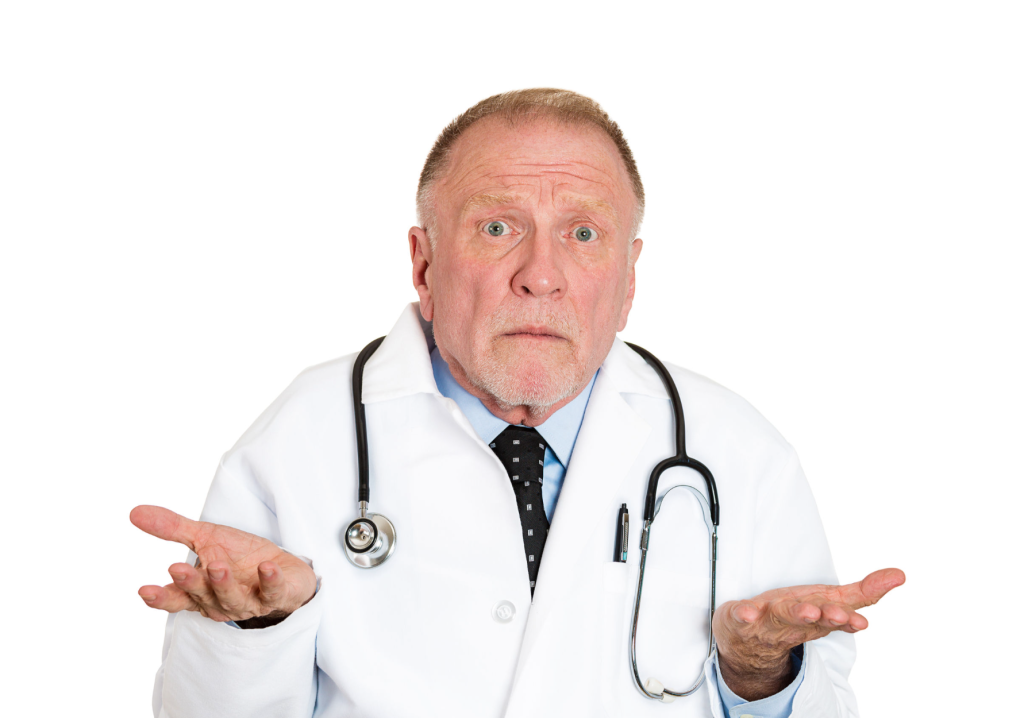

And the doctor usually is, too
That’s doctorspeak for when patients don’t well remember or relay the details of their medical pasts. This strange phrase deserves consideration. What trait is honored in the breach? What is wanted from the good patient is not to launch into one’s “story” or thrust forth an identity but instead to give something like a personal Carfax report marking relevant milestones. If we take into account social determinants of health, the narrative that clinicians might want from us approaches biography both broad and deep. To be a good historian in this sense means that one must walk around with an assembled sense of her past at the ready for an emergency room or office visit.
What’s astonishing is the assumption that we should be able to assemble and present this narrative. I suspect most of us probably cannot. Puzzling, too, is why we aren’t better at it, given how much practice social media gives us at pushing views of ourselves to precisely carved audiences. But perhaps that’s the wrong kind of practice, abstracted and decontextualized.
The very idea of patient-as-good-historian highlights our more general inability to form this history in the ordinary places of daily life. It’s no compliment to be called a poor historian. The term offends particularly when age or dementia impedes the patient’s reporting, and some doctors would retire it. Awareness that patients increasingly see their records online has made some doctors weigh words cautiously.
If the adage illuminates incapacities common to patients, it might also flag concerns about doctors. Only hubris could make people confident of getting their history right on this side of the eschaton, so it is a tall order to think a doctor will find order in our chaos. That patients expect this order in a doctor’s office is no less astonishing than doctors’ assumption of patients’ neat histories. People admit things to doctors they would admit to no one else, intimate things, embarrassing things. It is hard to think of a public setting outside of religion more emotionally loaded than encounters between doctor and patient—confessional, aspirational, with power differentials, jargon, and baroque manners. I think I am not a poor historian, except in the sense that my kind of doctoring commands less market reward than an MD’s. I admire people who not only manage their own histories but hold them for others, children or neighbors or aged parents.
Why do we care what our doctors think of us? Unlike encounters with most other people, we want them to spot what’s wrong with us, and quickly. But patients might also want doctors’ concern, affection, admiration, respect. This desire may account for some regret over medical interactions—not just that the doctor did not heal but did not hear. Appointment notes are where we discover what doctors really think of us. We may not like what we learn.
The gap between the reported self and expert’s gaze might stretch widest for mental-health appointments. Much of George Scialabba’s memoir of mental illness, How to Be Depressed, is told through transcription of psychiatrists’ notes. These summaries seem almost inconceivably uncomfortable for the patient himself to read. Scialabba compares them to a “bill of lading” handing him from one doctor to another. Maybe the reading brought some satisfaction, like seeing the length of a splinter pulled from a wound. Psychiatric fashions from the past parade through Scialabba’s pages, ruminative paragraphs written in 1969, to shorter notes on shorter visits, to recent ones little more than prescription logs. One doctor listens with no apparent disagreement when Scialabba admits missing sleep and eating junk food in the remembered aftermath of lost faith, complimenting him as “a neatly groomed, articulate young man” and advising against hospitalization. Another wonders “whether part of his subsequent decline is attributable to oedipal fears which his success represented.” I admire Scialabba’s efforts as historian when, in one doctor’s testimony, “He presents me today with a rating of his moods which he has devised.” An intake interview marks him as “Physically in good health, though not ‘bursting with energy.’”
Even in successful communications between historian and history-taker, one suspects that the clinician may not be interpreting the patient in the fullest, best way. After hearing Scialabba’s anxiety over professional and religious choices, one MD insists, “I clarified that man is both emotions and intellect, and it is lack of integrity not to be aware of the fact in making decisions.” His doctors’ occasional obtuseness would be funny if the stakes were not so high.
Both parties in a medical encounter can fall short, but the one with advanced degrees might have tools to bridge the distance. That seems to be a popular hope, anyway.
If the everyman is supposed to be his own historian, the physician we want across the table is someone like Boston’s Jim O’Connell, who sums up his approach to patients this way: “You try to take care of people, meet them where they are, figure out who they are, figure out what they need, how you can ease their suffering.” This sounds like the person most of us might want as our doctor, except that he limits his practice to Boston’s Rough Sleepers, Dr. O’Connell’s affectionate nickname for his patients and the title of Tracy Kidder’s new book about the extraordinary physician. Those who “sleep rough” are homeless men and women. O’Connell treats patients from a mobile medical van that meets rough sleepers where they are, literally and figuratively. He takes his salves and screenings to patients sleeping under bridges or behind buildings, and then he hears them out, waits on their timing to disclose details about symptoms. Some balk like poor historians from central casting. But O’Connell persists, and takes a share of the research on himself. He listens to what people say, reading between lines and observing context, finding evidence in physical artifacts. Some tell their history with their feet. O’Connell learns the discipline of his craft by foot-soaking, preparing iodine baths at a shelter when patients agree to take off their shoes. The body keeps the score: Feet can reveal vitamin deficiencies and complications from frostbite—which predicts a death rate eight times higher than normal, all things being equal. O’Connell’s aim seems to be to ease suffering, and when necessary, use words.
The appeal of reading about Dr. Jim O’Connell might come from the way he answers the desire, of those less vulnerable and maybe more voluble than O’Connell’s regular patients, that someone help them compose a history they can’t write by themselves. History requires accurate excavation and safekeeping of facts. But it also requires interpretation. It’s no small compliment to the historical profession—whether intended as one or not—that medicine uses this idiom to describe what works best when doctor and patient together can get it right.
Agnes R. Howard teaches in Christ College, the honors college at Valparaiso University, and is author of Showing: What Pregnancy Tells Us about Being Human. She is a Contributing Editor for Current.